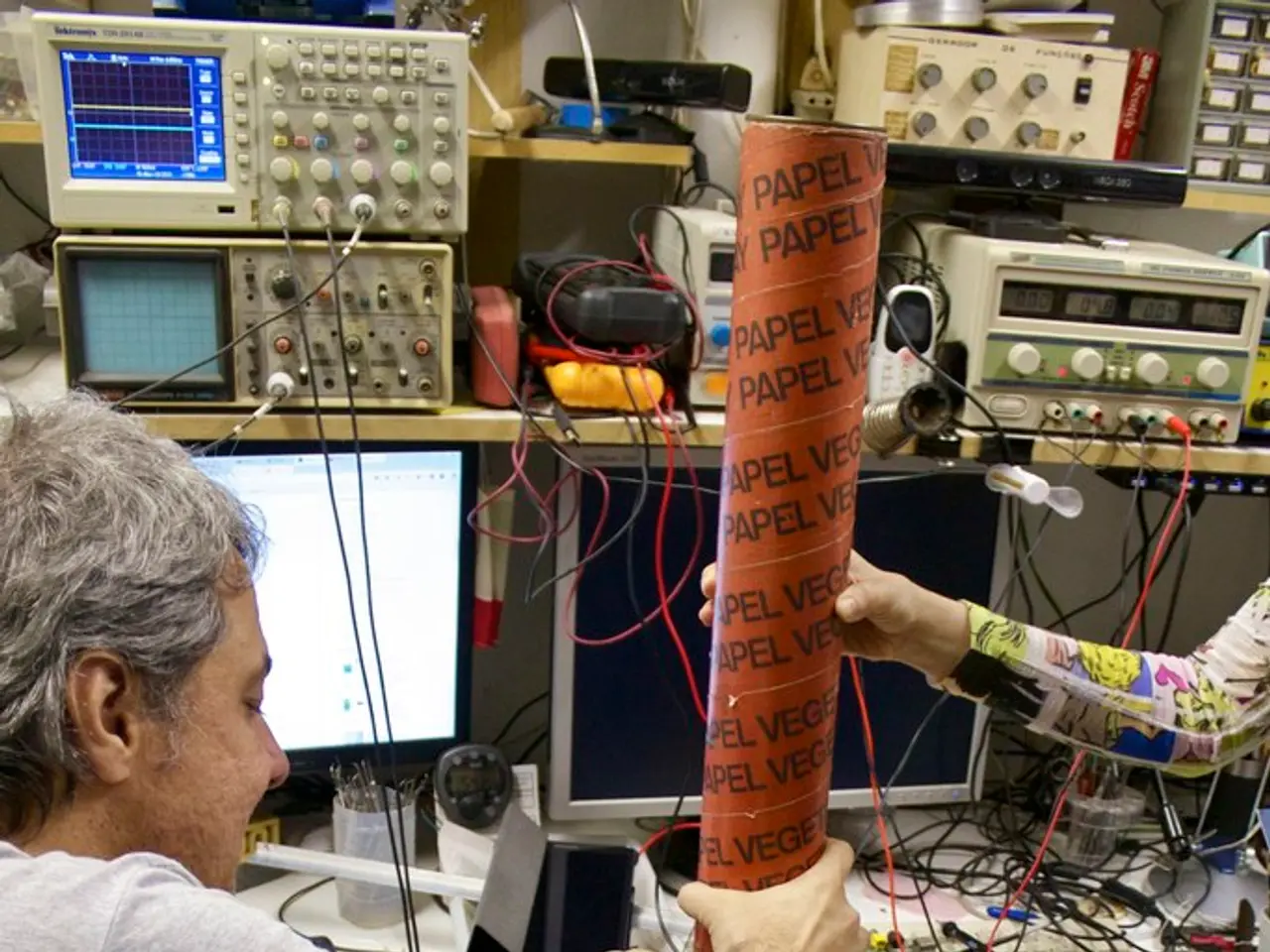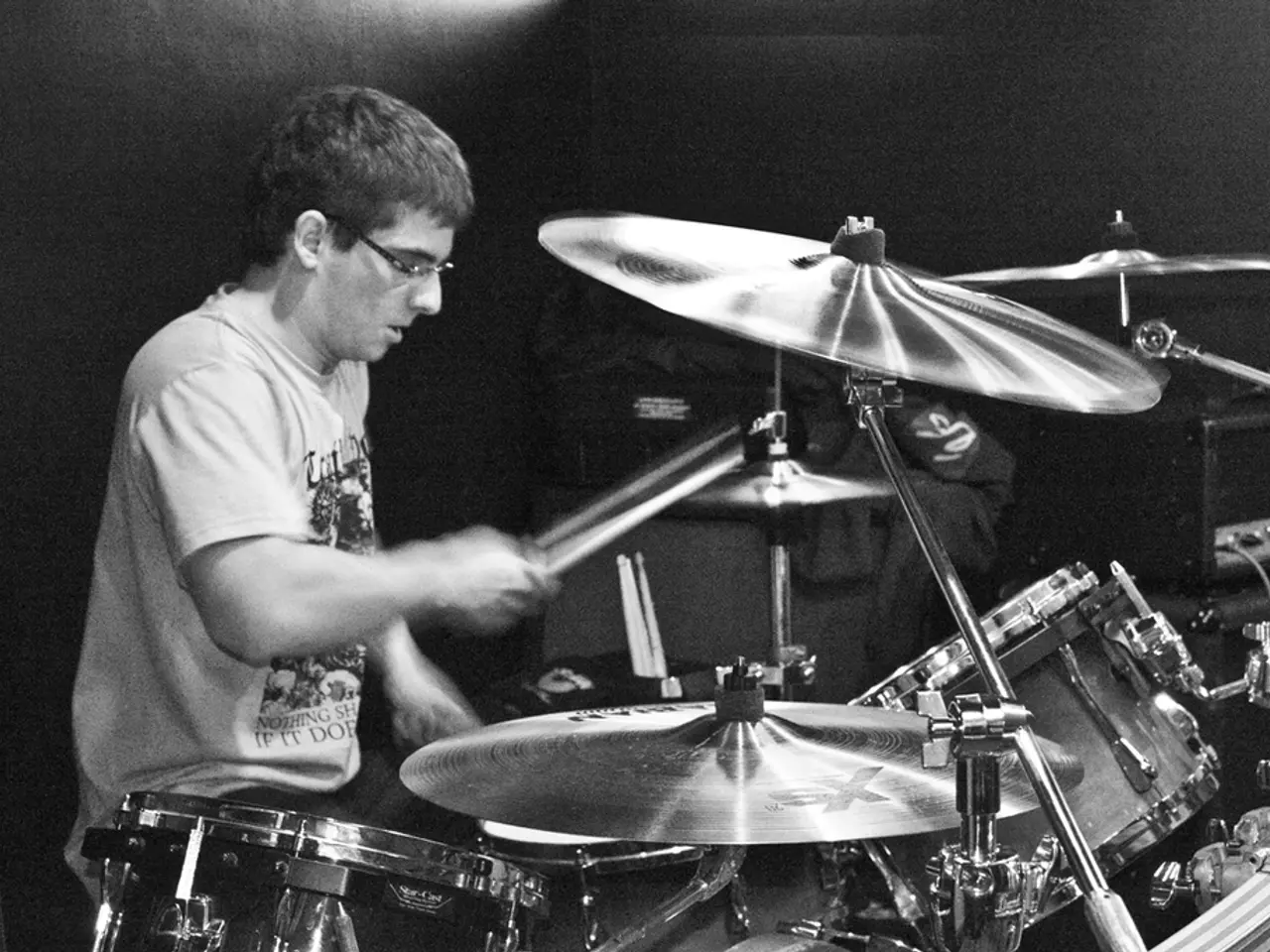Unveiling Invisible Aspects of Synapses Through Fresh Visual Evidence
In a groundbreaking study, researchers have developed new 3D imaging techniques to visualise synapses, the junctures where neurons communicate, in unprecedented detail. Led by Steve Goldman, MD, PhD, co-director of the Center for Translational Neuromedicine at the University of Rochester and the University of Copenhagen, this study sheds light on the role of astrocytes, a type of support cell in the brain, in neurodegenerative diseases such as Huntington's disease (HD) and schizophrenia.
The research, published in the journal PNAS, demonstrates that astrocyte dysfunction plays a critical role in the pathogenesis of these conditions by disrupting synaptic regulation, neurotransmitter balance, and neuroinflammation.
In Huntington's disease, astrocyte dysfunction leads to metabolic disruption and imbalance in neurotransmitter homeostasis, notably glutamate excitotoxicity, which contributes to neuronal damage and disease progression. On the other hand, in neuropsychiatric disorders like schizophrenia, astrocyte dysregulation of synaptic function and neurotransmitter imbalance, especially in glutamate and GABA systems, is implicated in synaptic abnormalities underlying cognitive and behavioural symptoms.
The new 3D imaging techniques allow researchers to analyse synaptic architecture and astrocyte-synapse interactions at high resolution in three dimensions. This helps identify how astrocyte morphological and functional changes, such as altered synaptic clearance or disrupted neurotransmitter recycling, directly impair synaptic integrity and plasticity. For example, uncovering astrocyte-induced synaptic deficits in specific brain regions through these imaging methods clarifies disease mechanisms and potential therapeutic targets.
The researchers focused on synapses involving medium spiny motor neurons, which are progressively lost in Huntington's disease. In the brains of healthy mice, astrocytic processes engaged with and completely enveloped the space around the disk-shaped synapse, creating a tight bond. In contrast, the astrocytes in Huntington's mice were not as effective in investing or sequestering the synapse, leaving large gaps. This structural flaw allows potassium and glutamate—chemicals that regulate communication between cells—to leak from the synapse, potentially disrupting normal cell-cell communication.
The team believes this technique could greatly improve our understanding of the precise structural basis for neurodegenerative diseases like Huntington's, schizophrenia, amyotrophic lateral sclerosis, and frontotemporal dementias. Moreover, the technique might be used to evaluate the effectiveness of cell replacement strategies for treating these diseases.
The study was supported with funding from the Novo Nordisk Foundation and the Lundbeck Foundation, and additional co-authors include Hans Stephensen and Jon Sporring with the University of Copenhagen, and Rajmund Mokso with Lund University in Sweden. The researchers used a diamond knife to serially remove and image ultrathin slices of brain tissue, creating 3D, nanometer scale models of the labeled cells and their interactions at the synapse. The team used a serial block-face scanning electron microscope at the University of Copenhagen to examine the brain tissue.
This structural flaw allows potassium and glutamate—chemicals that regulate communication between cells—to leak from the synapse, potentially disrupting normal cell-cell communication. Combining knowledge of astrocyte dysfunction with high-resolution 3D synaptic imaging advances our understanding of their central role in neurodegeneration and psychiatric conditions, providing a clearer view of how glial cells contribute to synaptic pathology and disease progression.
[1] Goldman, S. et al. (2022). High-resolution 3D imaging of astrocyte-synapse interactions reveals mechanisms of neurodegeneration and synaptic dysfunction in Huntington's disease. PNAS. [2] Hansson, O. et al. (2018). Astrocyte dysfunction and neuroinflammation in neurological disorders. Nature Reviews Neurology. [3] Mokso, R. et al. (2020). Defective astrocyte maturation and dysfunction trigger neuroinflammation and neuronal degeneration. Glia. [4] Stephensen, H. et al. (2021). High-resolution 3D imaging of astrocyte-synapse interactions in neuropsychiatric disorders. Neuron.
- The new 3D imaging techniques, as used in Goldman's study, contribute significantly to the field of health-and-wellness by enabling researchers to understand the intricate astrocyte-synapse interactions in the context of neurological disorders like Huntington's disease, schizophrenia, and other related conditions.
- In their research on medical-conditions such as Huntington's disease, researchers have discovered that astrocyte dysfunction can lead to structural flaws in synapses, causing potassium and glutamate leakage, which might further contribute to neuronal damage and disease progression.




